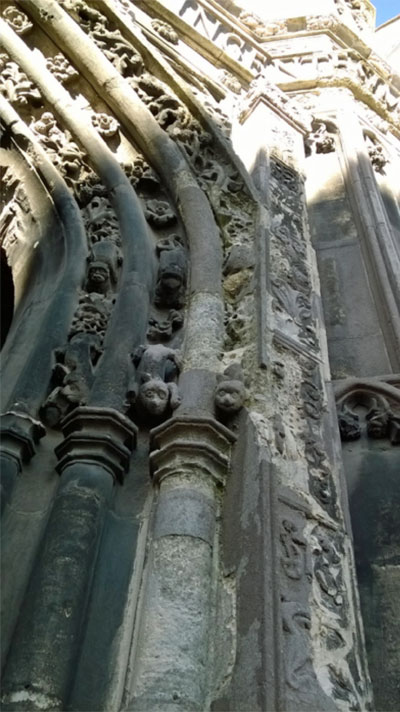This Hospital was founded c. 1085 by Archbishop Lanfranc after being called over from France by William Conqueror to reorganise the Church of England.
Petition of Wilkes, John, deputy bellringer of Canterbury Cathedral. Asking for a place to be bestowed on him.
This was built on a large scale making provisions for 100 old and needy folk with `watchers’ to care for them in sickness and a priory over the road.
The Hospital was endowed with much land and property including all the land the University stands on for at least six centuries. Destroyed by a fire three centuries after being built but extensive rebuilding did not begin again until later in the Middle Ages.
The Reformation left the building intact and a survey carried out in 1546 by Henry VIII’s commissioners describe the chapel as possessing three copes, fifteen sets of Eucharistic vestments, rockets and missals, a latten censer, a Bible, three sets of candlesticks and adornments for the Easter Sepulchre as well as some pewter bowls. Two shillings a year were given for holy bread and four shillings to the clerk of the church.
Petition of Osborn Thomas, labourer of St Alphege. Nearly 60, worked as a stonemason’s labourer and has had to rely on his father, a brother of St John’s hospital. Asks for a place made vacant by Cleve Castle.‘his sight much destroyed he can hardly hear and being in intolerable pain that makes him cry out…..’
The kitchen possessed brass pots and pans, iron racks and 2 spits, 21 platters, 8 pewter dishes, 19 saucers, 2 chargers and a small mazer bowl. The house for the sick was furnished with a featherbed with two pillows, six pairs of sheets good and badd, two shirts and seven coverlets for the comfort of the poore folk.
Further research
I have not been able yet to find out much about the funding of this Hospital but will investigate Ingram’s references to see if I can find out anything further.
Derek Ingram mentions certain books that are preserved in the safe in the Refectory these include:-
- Priors books 1511-1553
- Pyttance Books 1521-1549 (this being a record kept by the chief brother of money collected at the Hospital Gate to increase the comforts of the old people).
- Booke of the Deyde 1538-1657
- Other accounts exist in volumes from 1659-1843, 1717-1811 and 1767-1786 (this a list of brothers and sisters too).
- A bound volume written in 17th Century which includes cathedral statues but also injunctions for the government of St John’s and St Nicholas issued by Archbishop Matthew Parker, John Whitgift, George Abbot and William Laud. This is dated 1686 to the Masters, Priors and Brothers and Sisters of the two hospitals.









